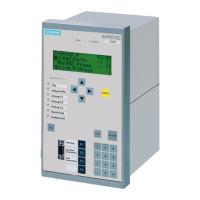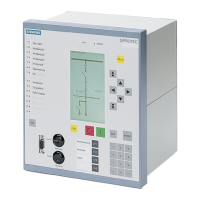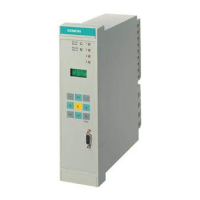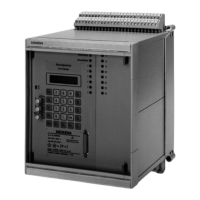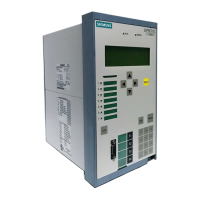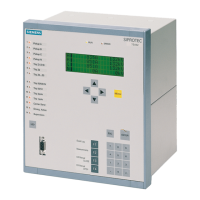2.17 Additional Functions
243
7SD610 Manual
C53000-G1176-C145-4
default setting see Appendix). The SIPROTEC 4 System Description gives a detailed
description of the configuration procedure.
The output relays and the LEDs may be operated in a latched or unlatched mode
(each may be individually set).
The latched conditions are protected against loss of the auxiliary voltage. They are
reset
• On site by pressing the LED key on the relay,
• Remotely using a binary input configured for that purpose,
• Using one of the serial interfaces,
• Automatically at the beginning of a new pickup.
Status messages should not be latched. Also, they cannot be reset until the criterion
to be reported is remedied. This applies to, e.g., indications from monitoring functions,
or the like.
A green LED displays operational readiness of the relay („RUN“); it cannot be reset. It
extinguishes if the self-check feature of the microprocessor detects an abnormal oc-
currence, or if the auxiliary voltage fails.
When auxiliary voltage is present but the relay has an internal malfunction, the red
LED („ERROR“) lights up and the processor blocks the relay.
DIGSI enables you to selectively control each output relay and LED of the device and,
in doing so, check the correct connection to the system. In a dialog box, you can, for
instance, cause each output relay to pick up, and thus test the wiring between the
7SD610 and the system without having to create the indications masked to it.
Information on the
Integrated Display
(LCD) or to a Per-
sonal Computer
Events and conditions can be read out on the display on the front panel of the relay.
Using the front operator interface or the rear service interface, for instance, a personal
computer can be connected, to which the information can be sent.
In the quiescent state, i.e. as long as no system fault is present, the LCD can display
selectable operational information (overview of the operational measured values) (de-
fault display). In the event of a system fault, information regarding the fault, the spon-
taneous displays, are displayed instead. After the fault indications have been acknowl-
edged, the quiescent data are shown again. Acknowledgement can be performed by
pressing the LED buttons on the front panel (see above).
Figure 2-109 shows the default display in a 4-line display as preset.
Various default displays can be selected via the arrow keys. Parameter 640 can be
set to change the default setting for the default display page shown in idle state. Two
examples of possible default display selections are given below.
Figure 2-109 Operational measured values in the default display
Default display 3 shows the measured power values and the measured values U
L1-L2
and I
L2
.
www . ElectricalPartManuals . com
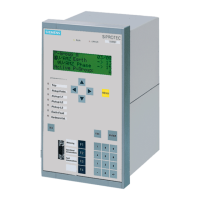
